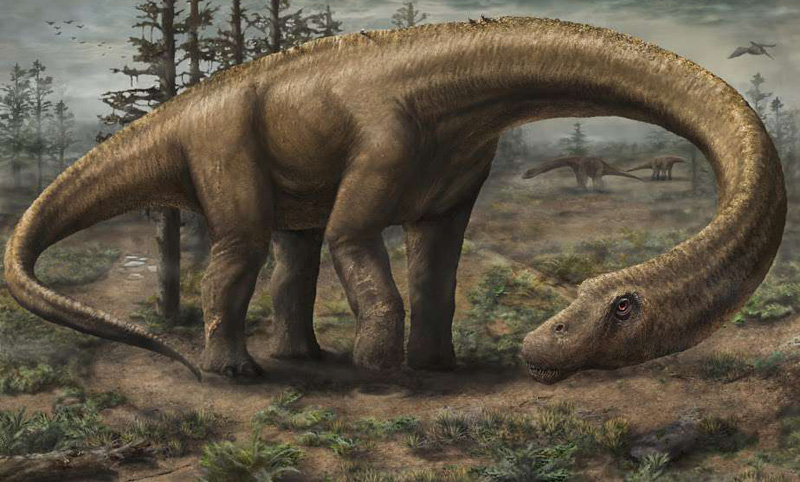 |
| © Illustration by Julius Csotonyi/Julius Csotonyi A unescoceratops and gryphoceratops appear in one of Julius Csotonyi's illustrations. |
By Joy Lanzendorfer, The Washington Post
Most people know what a Tyrannosaurus rex looked like. Its snarling teeth, slashing tail and tiny arms make it one of the most recognizable dinosaurs that roamed the planet. Yet if it weren’t for paleoartists, the T. rex would be just another fossilized skeleton in museums.
Paleoartists specialize in using scientific data to make images or models of long-extinct animals. In the process, they take the prehistoric world out of the abstract and bring it to life for the rest of us.
Julius Csotonyi’s paleoart has been used in scientific papers, coins, postage stamps and murals — including many at the Smithsonian’s soon-to-reopen Fossil Hall. In addition to his artistic skills, he has a doctorate in microbiology and a master’s degree in ecology. He considers his scientific background crucial to his job.
It “helps me understand how animals in their environment interact and how to accurately restore prehistoric ecosystems,” says Csotonyi (pronounced chit-a-nee).
Paleoart usually starts with a fossil. If the actual dinosaur fossil is unavailable, artists can use a 3-D rotatable digital model or photographs. Paleoartists then work with the scientists to learn details about the dinosaur’s diet, behaviors and environment. From there, the artists build the image in stages. First they might settle on the overall shape of the animal, then work outward from the skeleton, adding muscles, soft tissue and finally distinctive features such as skin, horns or crests.
Of course, dinosaurs are still mysterious and largely unknown. Paleoartists’ challenge is to fill in the missing pieces as realistically as possible. To do this, they use a combination of direct evidence — what’s known for sure — and indirect evidence from known environments.
 |
| © Jennifer Hall/Jennifer Hall Dreadnoughtus was estimated to be more than 85 feet long. Its remains have been found in South America. |
Jennifer Hall, whose work has been in Scientific American magazine and on the History Channel, looks for clues in similar living animals. For example, birdlike dinosaurs might have had bright colors like modern-day birds. But if a dinosaur was frequently hunted, then “you probably want something that you would see in our modern prey animals,” she says. “Whether it’s mule deer, which are more sandy in color and blend into the dry landscape, or zebras, which have stripes to blend in with the vertical savanna.”
Today we’re learning more about dinosaurs than ever before. Previously unknown species are being discovered regularly. We’re also learning more about what they looked like. Fossilized feathers have been found in rock and amber. Electron microscopy is revealing patterns found on the dinosaur’s skin. In some cases, it’s even possible to know what colors they were.
The paleoartist’s job is to render these discoveries in a way that sparks the imagination. Sometimes that means using a bit of artistic flair — and even a dash of fun.
“I always think back to when I was visiting a particular aquarium, and there was a fish that was blue, and its lips were blue with pink polka-dots,” Csotonyi said. “It was real and it looked so ridiculous. It makes me feel okay to come up with an outlandish idea every once in a while, because these things do exist in nature.”
 |
| © Provided by WP Company LLC d/b/a The Washington Post |
See paleoart up close
Julius Csotonyi’s artwork can be seen in 53 paintings in the Smithsonian’s National Museum of Natural History’s “Deep Time” exhibit, which opens June 8. Here are a few details to look for.
Behind the mastodon: See if you can spot a human hidden in the vegetation.
Coal forest landscape: Find many weird plant species in this mural.
Eocene forest: Try to spot an herbivore, a carnivore and an omnivore in this large mural.
— Christina Barron
Follow my blog with Bloglovin























